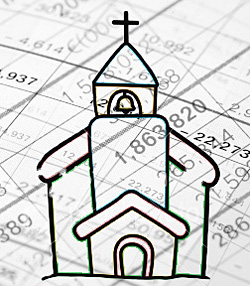
Start To Compromise
No matter how much we wish, within this given example, a number of less than $70 per seat for a quality system to adequately serve the stated needs will start to compromise function, coverage and level. There’s also a finite cost-per-seat amount where the system simply will not fulfill any of the pillars.
This costing methodology is not a parlor trick or creative accounting. it should, if you do some simple math and get enough sources of like-scaled projects, allow you to understand and explain to others what the correct number is for your project.
The point here is to take brand names, emotion and minuscule details out of the equation. This method should allow you greater flexibility in evaluating proposed solutions, alternatives, as well as determining where you might be able to trim costs without too much compromise.
Every situation and system is different, and this will impact cost, usually with it going up rather than down.
Examples:
More Numbers
Let’s move on. A quality system serving traditional services can easily present a base-line cost of around $100 per seat, and systems for contemporary services can cover in the $135-per-seat region. (And this is just for sound, not including other production elements like video and lighting.)
The first three basic pillars again explain the fourth (cost) of larger, more complex systems.
1) Functions are expanded with complex routing, automatic/programmed scene changes, advanced signal processing, performer monitors, operator training, and more. Also, cabling, routing and termination are more complex, as are the documents to explain them.
2) Coverage is even more complicated. And, additional considerations for coverage include structural, technical, aesthetic and safety issues – particularly related to suspending large loudspeakers.
3) Levels are usually higher, along with wider bandwidth (“higher highs and lower lows”) for realistic reproduction and reinforcement. And with higher sound pressure level comes specialized equipment room construction, cabling raceways, cooling and power issues.
Are you surprised by the budget numbers? Perhaps intimidated or dismissive? Many have these initial reactions until this information is referenced to their own circumstances.
Remember, we’ve already come to the conclusion that a properly done sound system is going to cost more than “one CD player per seat.” But how much more?
The important thing is perspective. Looking back, did a church have two of three iterations of sound systems that came in below $35 per seat? And be honest, were these successful in meeting desired function, coverage and level? A point to ponder: two times $35 per seat does not equal $70 per seat!
Another example of cost per seat, and this one in the more literal sense: the seats themselves. You know, those infamous stacking plastic contoured chairs that cost “only” $40 apiece from a supply house?
What may seem like a large amount of money to some for a sound system (and it is!) might not even be enough to provide temporary seating. Most folks do not willingly sit through a service on the aforementioned plastic stacking chairs, but they will suffer week after week from bad sound that costs even less than their chairs!
The ultimate goes is successful execution of a project that has a higher purpose. The easier it is to understand the cost subject, the sooner everyone will be singing off the same page.
Tom Walter has worked in numerous aspects of professional audio for more than 35 years.
